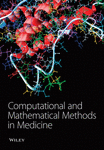Immune Responses and Viral Phenotype: Do Replication Rate and Cytopathogenicity Influence Virus Load?
Abstract
We use mathematical models to investigate the relationship between viral characteristics and virus load under the following immune responses: (a) CTL-mediated lysis, (b) CTL-mediated inhibition of virus entry into target cells, (c) CTL-mediated inhibition of virion production and (d) antibody responses. We find that the rate of virus entry into target cells may generally only have a weak influence on virus load. The rate of virion production by infected cells only has a weak effect on the equilibrium number of infected cells while strongly influencing the number of free virus particles. On the other hand, viral cytopathogenicity may be a major determinant of virus load under certain types of immune responses. If there is no immune response, or if immune mediators inhibit infection of target cells, non-cytopathic viruses may attain significantly higher abundances than cytopathic ones. On the other hand, immune mediators acting on infected cells control both types of viruses with similar efficiencies. These results are used to interpret data on perforin-knockout experiments in LCMV infection and provide the basis for understanding the suppression and rise of non-syncytium (NSI) and syncytium inducing (SI) HIV phenotypes during the disease process.




